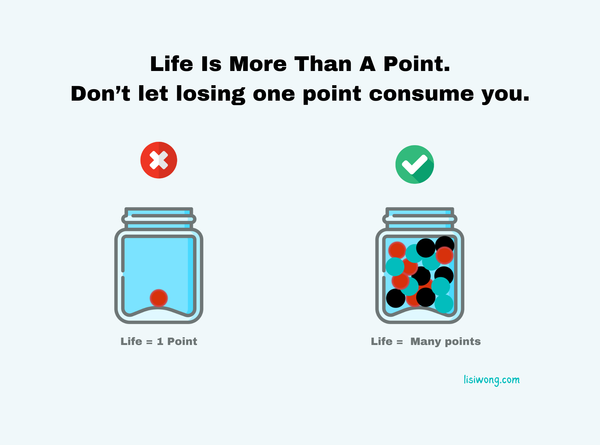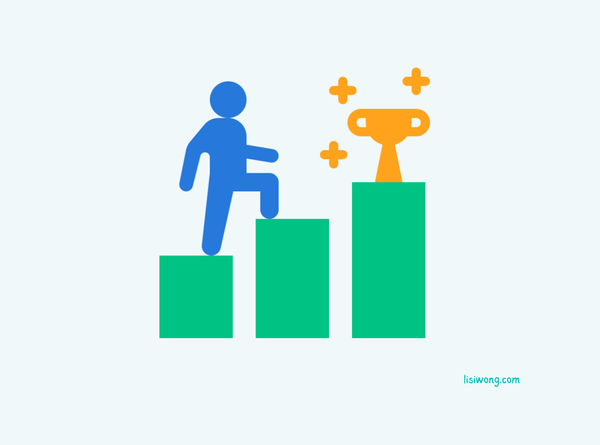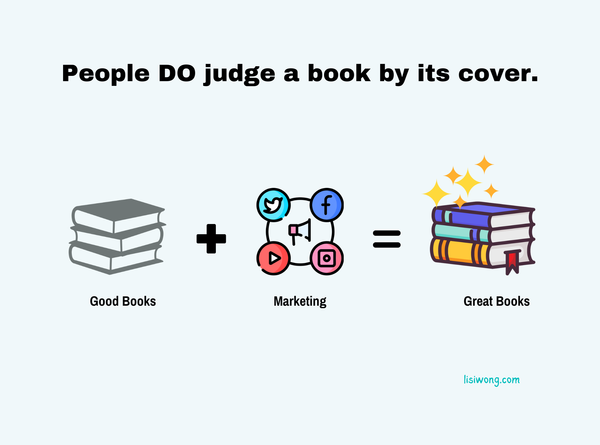A Great Idea Is Not 90% Of The Work
By applying the real estate principles to product development, I create a different lens of how Product Managers can create solutions that not only meet current demands but also appreciate over time, just like prime property
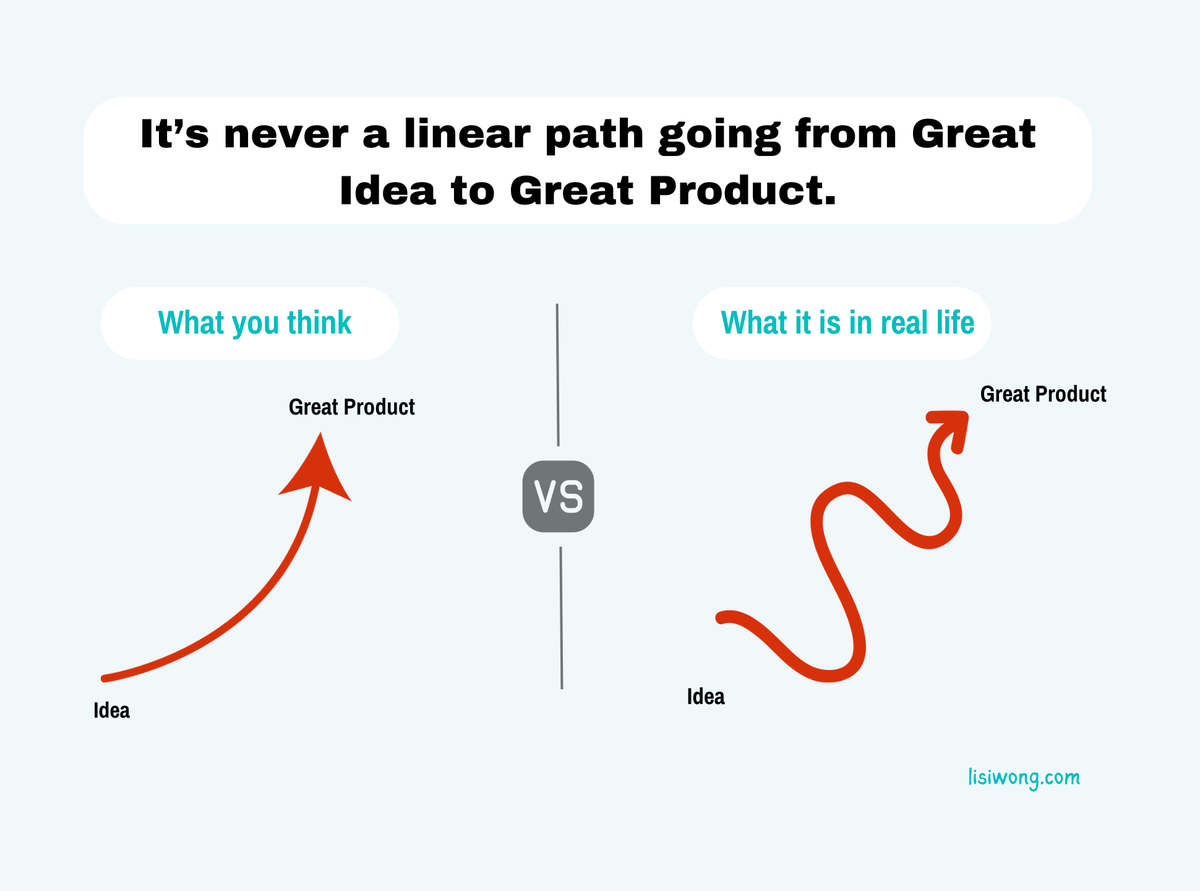
It's a great idea - let's do it it now.
Haven't you heard this before?
It's a flawed perception that a great idea is the most crucial element in creating a successful product - that is once you have a brilliant concept, the rest of the process (development, execution, and market success) will naturally follow.
In this article, I have used the analogy of property investment and flipping it for a profit, a concept that is well-understood by many to draw parallels with product development to highlight the pitfalls.
A great idea is NOT 90% of the work
This common misconception is also well-articulated by Steve Jobs, the famous visionary founder of Apple in this 3 minutes interview below.
Steve Jobs explains the difference between a great idea and a great product
Here's the snippet of what he said...
“One of the things that really hurt Apple was, after I left, John Sculley got a very serious disease. And that disease—I’ve seen other people get it too—is the disease of thinking that a really great idea is 90% of the work.”
Designing a product is keeping 5,000 things in your brains and trying to fit them all together.
It's the process that is the magic.
Steve Jobs compares a team working hard to shape an idea they are passionate about to that of a rock tumbler:
“It's through the team-through a group of incredibly talented people-bumping up against each other, having arguments, having fights sometimes, making some noise, and working together... they polish each other and polish the ideas. And what comes out are these really beautiful stones.”
Opinions are free
🖐️ Wait. Surely if you hired professionals for the job - they should be able to take your idea and polish it off.
But really?
Because throwing an idea is like putting an opinion out there - it's baseless without substance and backing.
There are so much unspoken assumptions that requires the robust collaboration between the idea originator and a core team to de-risk the idea.
Let's draw out the parallel with a familiar concept - the lifecycle of investment property.
Think of Product Development like an Investment Property
So here's the scene:
You are a working class professional with a pile of cash. Upon witnessing your friends' success with their investment property portfolio, you believe you can achieve the same by buying and flipping an investment property for the first time.
In a parallel example of Product development, you have some cash and have witnessed the scalability of software business. You don't have experience in the software business yet.
Let's go through the similarities in the lifecycle with the side-by-side comparison.
Step 1: Conducting Market Research and Due Diligence
Before any investment, you will want to know the market profile, potential and its risks as a first step. It's never about baking in numbers - it's more about having a finger on the pulse and solidifying those unspoken assumptions about the value drivers.
So here's Step 1...
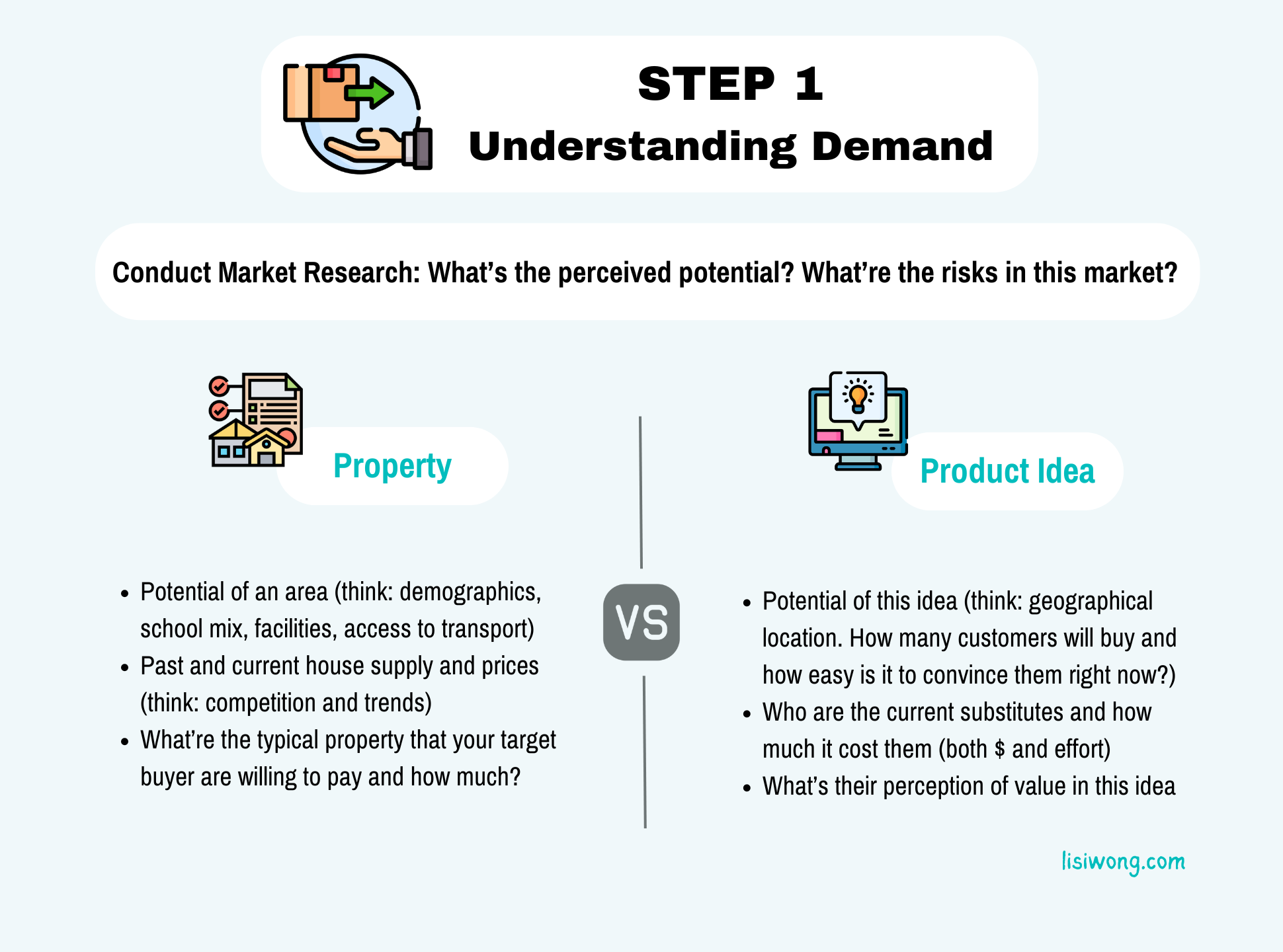
These are the due diligence that take time and reflections. You can timebox these activities but you would not want to rush it.
Step 2: Defining Your Own Investment Appetite
Great that you have a good idea of the potential. It's now time to work out how much appetite you have.
So here's Step 2...
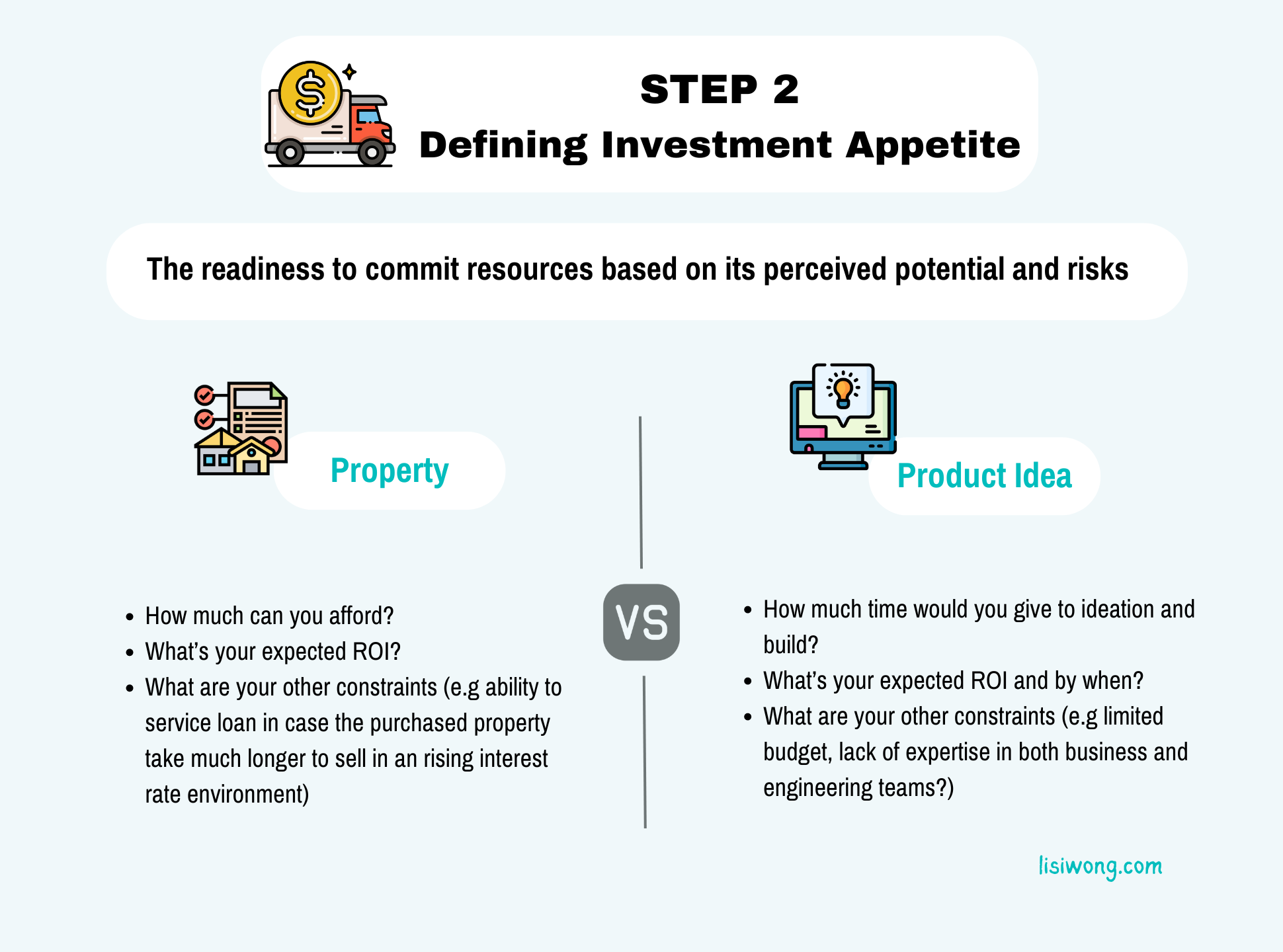
This is when you start getting serious about how much you would put towards the investment to achieve a sustainable ROI.
Step 3: Developing Your Product Idea is similar to Renovating a Property
There are many similarities in the product development process to that of property renovation.
Now in the property space, after months of researching and bidding, you finally manage to snap up a sixty-year-old dated house for a neat price. From research, you know the target buyers are young families who are willing to pay for a property that is move-in ready.
So this means this property is going to need renovation. Having done your numbers earlier, you know your budget for renovation to achieve a ROI.
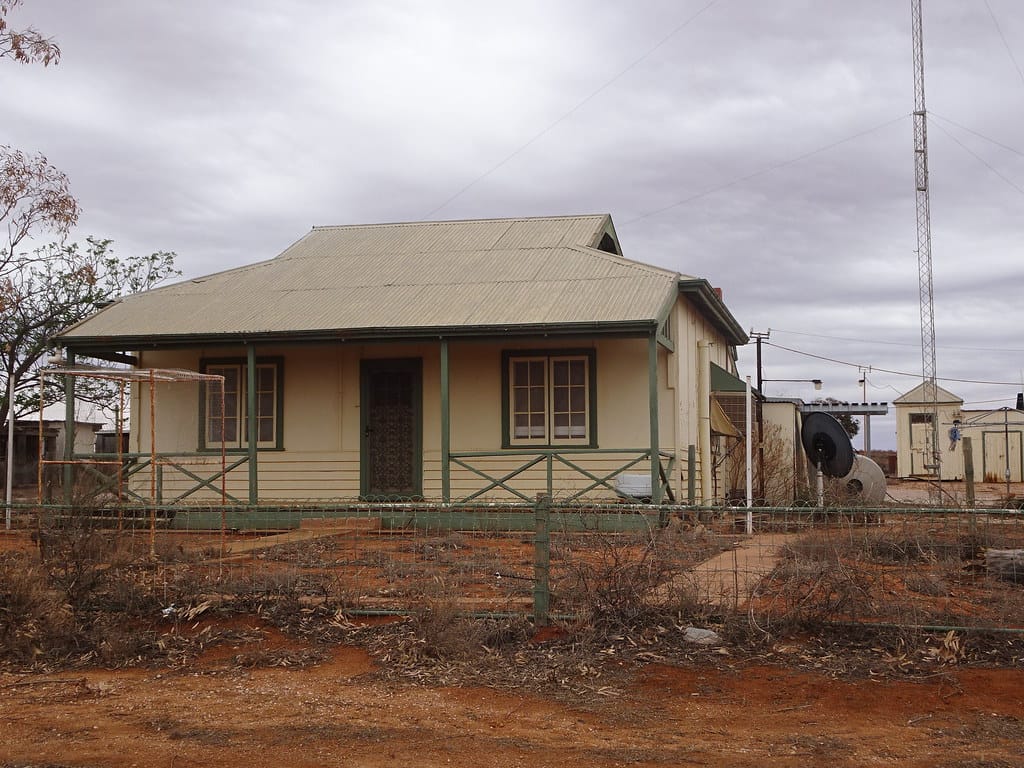
VS
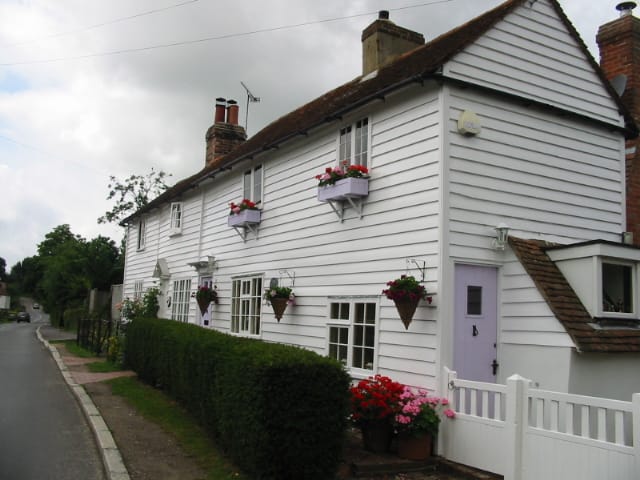
So that brings us to Step 3 of your investment property - renovation - to bridge the gap between what you have now vs what buyers are willing to pay for.
Now let's compare the renovation process to that of a product development process in Step 3 below.
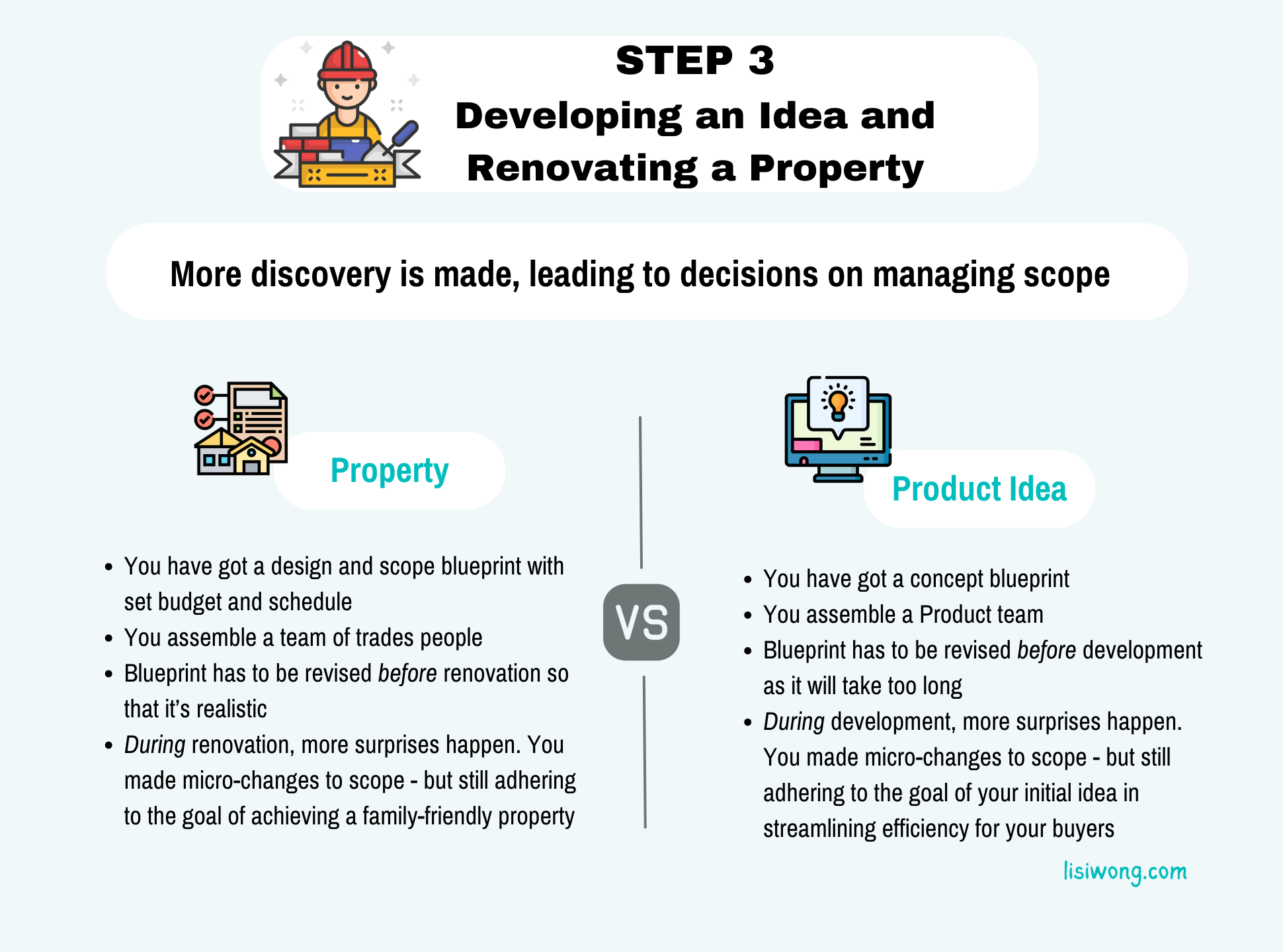
And then further surprises as the lifecycle progresses into the process of renovation and development.
Climbing the Hills Of Product Development
Wait, another surprise. You already climbed the hill with the initial purchase and scoping. Now there's another peak to climb!?
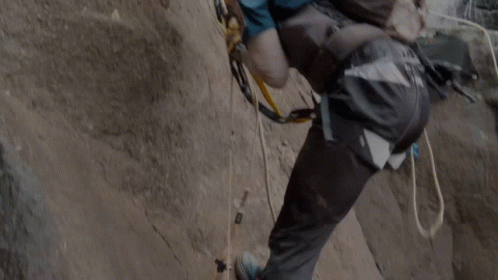
Well, the similarities in Product Development and Property Renovation centre around an arduous and yet beautiful process of morphing the initial concept towards a valuable, feasible outcome- where a bunch of people bumping out against one another, ironing out the value, appetite and constraints to polish off the idea.
It's never easy as you know...
Conclusion: Work out the Supply and Demand Equation for Your Great Product Idea
🙋♀️ There are a few steps in the Product Development lifecycle as highlighted above.
Great ideas can come from anyone and anywhere - be it a product manager, engineer, sales or even the business owner.
However, starting right with the first step is key - which will require putting aside time to conduct due diligence. This requires a robust collaboration between the originator of the idea and the core product team members to work through the unspoken assumptions, de-risk the idea and in turn having collective ownership.
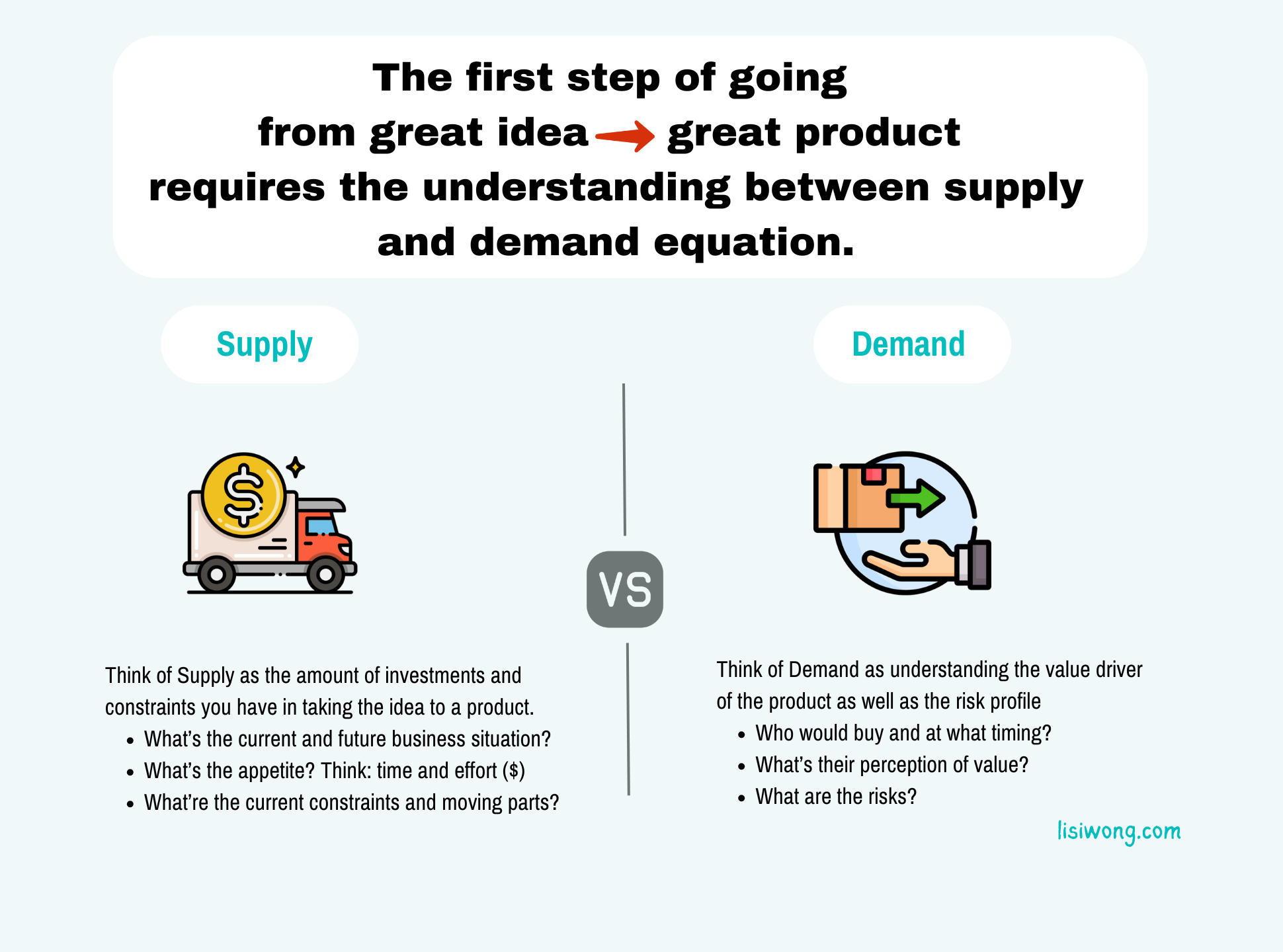
Hey, pretty explanatory in that visual above 👆
The aim of due diligence is to solidify the unspoken assumptions and in turn de-risk the investment - be it in a property or a product idea.
And remember, it is never a linear path from translating a great idea to a great product. You just have to climb those hills. There is no easy way out.
Great Idea doesn't translate to Great Sales
So your renovated, sleek-looking property is now ready for sale. But that doesn't guaranteed a desired selling price on its own, without engaging a property agent to develop the marketing and sales approach in a competitive area.
The same concept goes for positioning and marketing a product - there's a lot more to attaining success beyond getting the product right. But that is one for another article.
This is just scratching the surface on the product development in a software business.
And so this leads me to my next point...
Send me your ideas for the next topic
I am toying with the following ideas to write about:
- How to find a practical, sweet balance in the supply and demand equation
- How to make decisions - this is a big one and warrants an article in its own right
- Positioning a product- selling the benefits, not merely the features
And many more that is bubbling away. I will love hearing what you are wrestling with - so drop your ideas in the comments if you are a subscriber or email that to lisi [at] hey.com
A quote that I've been pondering on:
If you have enjoyed this post, you may want to sign up for my newsletter. Or even better, forward to a friend who may enjoy the same.
No spam, only nuggets of signals and wisdoms that occasionally delight your inbox and help you cut through a noisy world.


